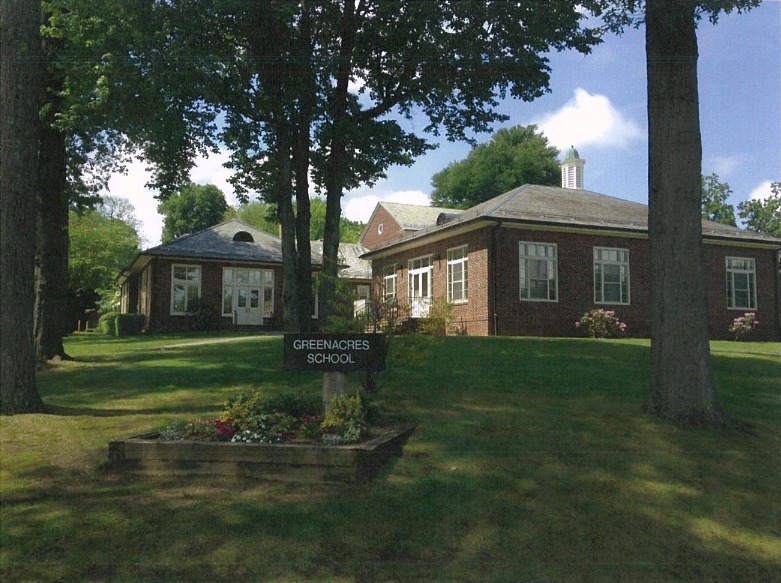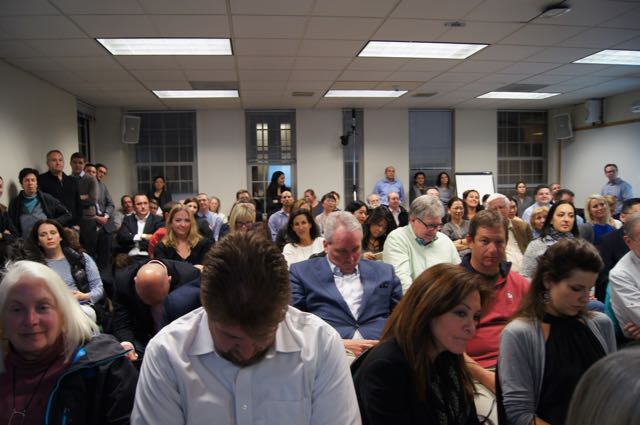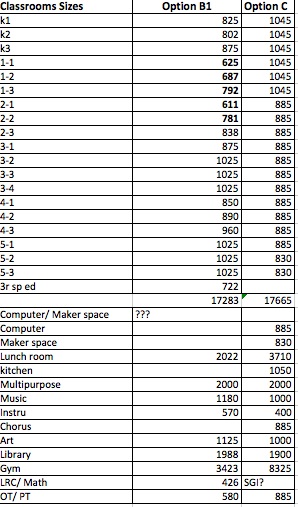Large Crowd Turns Out to Weigh in On the Future of Greenacres
- Category: Schools
- Published: Tuesday, 17 May 2016 16:29
- Joanne Wallenstein
 Though School Board President Lee Maude began the public comments section of the May 16 school board meeting by asking alarmed parents to refrain from "hyperbole, exaggeration and rhetoric" about the risks of proposed construction at Greenacres School, by the time the meeting drew to a close at the stroke of midnight, it seemed that the Board had been swayed by these same parents, and as a result, decided to change their course.
Though School Board President Lee Maude began the public comments section of the May 16 school board meeting by asking alarmed parents to refrain from "hyperbole, exaggeration and rhetoric" about the risks of proposed construction at Greenacres School, by the time the meeting drew to a close at the stroke of midnight, it seemed that the Board had been swayed by these same parents, and as a result, decided to change their course.
The room was packed with many residents who had previously come before the board to urge them to save Greenacres field and a newer group of parents with young children who currently go to the school or will be there during construction.
Many of them had emailed the board and Lee Maude assured them that all members of the Board review every letter they send in. She said, "In the last two weeks we got many, many letters about the Greenacres School. The Board will consider all points of view. The ultimate decision will be made by a bond referendum after a thorough examination of the facts by the board. We will also take into account the debt capacity of the district..... We have a lot to think about .... We will not base our decision on how many letters we receive from one side or the other. We have received many letters about the dangers of construction. Please know that the safety of children is our utmost concern. Many of the letters have made assertions about the hazards of construction debris ... We have received many letters that are alarmists and warning us of litigation."
There were two lengthy periods for public comment and you can watch the four hour meeting in its entirety here. Below are comments from some new voices who raised concerns that we had not previously heard:
Thomas Giuffra identified himself as a resident of 14 years who is an attorney who specializes in lead paint litigation. He said he has a five year-old who will start school next year. He said that kids ages 6-10 years old are the most vulnerable to lead poisoning, not from eating lead paint chips but from breathing lead dust. He said, "I don't want my son to pay the price. Look at the literature, it's no joke."
Dr. Katherine Miao of 51 Walworth Avenue said she had not previously gotten involved in the discussion because her family was not affected one way or the other. However she told the board, "I was concerned when I learned that the children would be inside the school." She referred to the Doll and Peto Report written by scientists at Oxford University in 1985, which analyzed the health risks from exposure to asbestos. The article says there is an exponential risk based on the age of the child. A child has 32 times the level of risk of developing cancer from asbestos exposure then their grandparent. More recent literature from Vanderbilt published last year, validated these results and said the risk may even be higher. She said, "I want the safest possible thing for the children."
Tony Corrigio of Brite Avenue said he is the father of three kids who will be in the construction zone. He asked the Board to reconsider option C. He said the footprint of the new building could be smaller and provide more green space. "These kids deserve an equal and safe opportunity to get an education here." The cost of the trailers for option B1 was taken out of the bid." Kids will have a materially higher likelihood of being exposed to a construction accident or mishandling of hazardous materials." Construction is the fourth most dangerous activity, the second most deadly activity in the U.S. You are dealing with electricity, fire, gravity, chemicals. You don't do it under the same roof where there are little kids. To knowingly subject kids to that level of risk is immoral."
Paulina Schwartz of Oakstwain Road quoted Board President Lee Maude at a March meeting where the board voted to take Option C off the table. Maude said, "it's what the community wants, but I just don't know about the kids over the next 40 years."
Board President Lee Maude at a March meeting where the board voted to take Option C off the table. Maude said, "it's what the community wants, but I just don't know about the kids over the next 40 years."
Schwartz presented her findings on the classroom sizes in the B1 option. She said that in some classrooms, kids are now sitting on the floor as there is not adequate room for desks for all the children. According to Schwartz, these small rooms will not be expanded during the renovation. Some of these classrooms are as small as 611 square feet. She said that the renovation would meet model program standards by providing new large classrooms for the older kids. However, in her view, the youngest children, who need space to move around, would still be stuffed into inadequate classrooms. She said, "Spending $40 million and getting a gym with no windows with the HVAC in basement? You should be nervous. You should give this community the best you have which is a new school."
Many more echoed concerns about safety, the disruption during construction and argued that the Board should not spend $40 to put a band-aid on the old school.
Also in the room were those who remain passionate about keeping the school where it is, and retaining the blacktop and the open field for both the school and the community. They said that the district has done many construction projects over the years without putting children at risk. They voiced concern about the expense of a new school and wondered if other neighborhoods would also ask for a new school.
Meredith Gantcher of Brewster Road, who was one of the leaders of the "Save the Field" campaign said that parents have "valid concerns." She said, "in light of the panic and alarm" she asked the board to educate the community about the hazards. She argued that kids at the high school would also be at risk during the upcoming renovation and said the "office move" at Greenacres was done with everyone's support. She asked the Board to respond to "rumors and heresay."
Madeline Hauptman asked the board about the water table at the field and questioned whether building there would impact the environment. Mike Greenberg said that if the original school were demolished, all the materials would blow all over the community and pose the same risks as a renovation. Marnie Gelfman said that "Option B1 remains the right choice." She said, "I sympathize with parents who do not want their kids in school during construction. However other renovations took place in occupied buildings without incident. I have confidence that the contractors will follow the law. The total net cost differential is a staggering $60 million. Option B1 is a responsible compromise."
There were two periods of discussion among the board and Dr. Hagerman during meeting. Below are comments made by board members at both times.
In a discussion with the board about next steps, Dr. Hagerman said that they would ask architects KG&D for several iterations of Option C to maximize green space. He wanted KG&D to explore making the new building more "stacked" or vertical and to consider different places to site the building on the field. He wanted to determine how a smaller gym and the elimination of the cafeteria would affect the price. Board members asked for an apples-to-apples comparison of what elements would be in option B1 versus Option C. along with temporary accommodations for Greenacres children if the renovation option was chosen. He said that it was important to make a timeline for the decision and to also bring the wider community into the discussion.
Art Rublin said, "These are school grounds ..... questions should be focused on the kids and what's best for the kids of Greenacres. .... I do think that a new building is not only better for the kids – and I don't think it would necessarily be more expensive in the long run."
Suzanne Seiden said, "I think we need to discuss the principles behind our decision. For me, Greenacres is the priority. The decision should be tax neutral. There is a fairness issue. Other schools have gotten a lot. We must check historical context within which to view this."
Scott Silberfein said, "I appreciate the process. It is incumbent upon us to do an iterative process on Option C. We need to get the facts. I would like to know what can be taken out or changed. We also need to see a version that includes trailers. We need to see how much that really is."
Pam Feuhrer posed questions about financing and energy efficiency said her "frustration with B1 is the small classroom sizes." She asked if that could be changed. She added, "I am concerned about the availability for capitol for the rest of the district for the next 15 or 30 years.
Chris Morin said, "It seems to me we want to know what the new building will cost and what the renovation will cost
Lee Maude said, "Having watched KG and D move from B to B1 ... we have not pushed them on C. What about a 3 story – not a 2 story building. I need to educate myself. I don't have all the facts. What about the water level on the field? I learned allot about the perils of asbestos and lead. And if we do B1, do we need to rent a temporary school for 2 years and is that feasible?
She concluded saying "Big decisions are messy."










